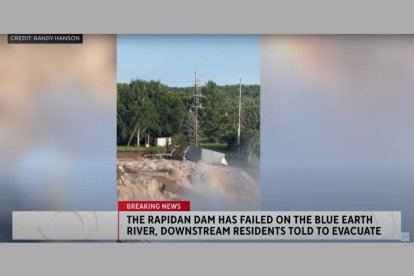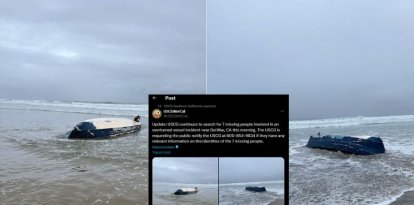At least two dead as severe storms ravage Iowa, South Dakota and Minnesota
The storm left two people dead, thousands without power and caused several issues with levees in Iowa.

Screenshot of a levee breach in Minnesota.
Storms continue to wreak havoc in the Midwest. The storm left at least two people dead as well as thousands of people without power. There were several problems reported with different levees in Iowa.
The first death was reported in Clay County, Iowa. There, the sheriff's office confirmed Monday that it had found the body of a person who had drowned as a result of flooding, according to NBC News.
The city of Spencer, located in that same county and with more than 11,000 inhabitants, also ended up cut off from the rest of the state by flooding. There, hundreds of people were evacuated to various buildings and a total of 383 rescues were made, according to Spencer Fire Chief Jesse Coulson.
In South Dakota, there was the second death. Governor Kristi Noem shared the tragic news but did not provide further details about what happened. She also revealed that President Joe Biden had approved a major disaster declaration allowing more resources to be deployed throughout the state to help those most in need.
Problems with power supply and dams on the verge of overflowing
The storm also left thousands without power. In Michigan, as reported by the Poweroutage.us website, a total of 160,000 customers reported that they had lost power Tuesday morning.
What is even more concerning are dams in several areas of the country. The sheriff's office in Monona County, near the Nebraska border, said the Little Sioux River destroyed various dams in several areas. A neighbor in Woodbury County, Iowa uploaded a video showing how the river overflowed the levee. The sheriff’s office shared the video on its Facebook account:
AP reported that there were also problems in Correctionville, Iowa. There, the National Weather Service said the Little Sioux River rose to nearly 31 feet, about 12 feet above flood level.
Acting mayor Nathan Heilman reported that residents had to be evacuated. Throughout Tuesday, the water level began to drop thanks to the downstream levee break as well. "That makes everything feel a little better," said the major. He advised that people remain cautious since there are still many factors that "we’re just kind of waiting to see."
RECOMMENDATION





















